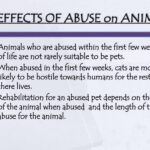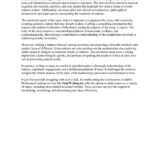In recent years, the issue of animal cruelty has garnered heightened attention across the United States, spawning a myriad of discussions, debates, and legislative efforts aimed at repealing outdated statutes and enacting more comprehensive protections for our fellow creatures. Yet, despite the visible passion that advocates pour into the fight against animal cruelty, many remain unaware of the intricate laws and regulations that delineate the boundaries of acceptable treatment of animals. Within this context, understanding the various animal protection acts that coalesce to form the legal backbone against animal cruelty is paramount.
The foundation of animal protection law in the U.S. rests upon a patchwork of state and federal statutes, each reflecting societal values and sensibilities that fluctuate over time. At the federal level, the Animal Welfare Act (AWA), enacted in 1966, serves as a cornerstone. Initially designed to regulate the treatment of animals in research laboratories, the AWA has since expanded to encompass a wider spectrum of animal-related concerns, including exhibition and transportation. The Act mandates minimal standards for animal care and treatment, notably prohibiting unnecessary suffering and ensuring humane handling. However, the AWA’s limitations are glaring; it does not extend to birds, mice, or rats bred for research, leaving a significant gap in the protective umbrella of animal rights.
Delving deeper into the legislative landscape, we encounter a myriad of state-specific statutes that govern animal cruelty. Each state prioritizes different aspects of animal welfare, creating a complex legal tapestry. This localized approach can sometimes yield progressive laws in jurisdictions where public sentiment strongly favors animal protection. For instance, states like California have enacted stringent anti-cruelty measures, including laws that prohibit the sale of dogs and cats from commercial breeders, thereby discouraging puppy mills and promoting adoption from shelters instead. Conversely, other states may lag in their legislative efforts, reflecting a cultural acceptance of practices that many animal advocates vehemently oppose.
A common thread running through these animal cruelty laws is the categorization of offenses, which often includes varying degrees of cruelty ranging from mere neglect to intentional harm. This gradation of severity acknowledges that not all mistreatment is born from malice; sometimes, the failures arise from ignorance or economic hardship rather than a consciously cruel intention. Nevertheless, such distinctions complicate legal interpretations and the enforcement of consequences, which can lead to inconsistency in prosecuting offenders.
The enactment of anti-cruelty laws often arises in response to public outrage regarding heinous acts of animal violence. Such incidents, while rare, serve as critical catalysts for legislative change, highlighting the disconnect between societal values and legal protections. In some cases, highly publicized events—such as dog fighting rings or severe neglect cases—ignite calls for reform, urging lawmakers to act decisively. However, the aftermath of such tragedies often reveals a troubling reality; the laws enacted frequently lack the teeth needed for effective enforcement and punishment. Fines may be minimal, and penalties ambiguous, leading to a cycle of repeat offenses that continues to perpetuate suffering.
Beyond punitive measures, there is a growing movement toward preventative legislation that seeks to address the root causes of animal cruelty. Education programs targeting potential offenders, along with initiatives aimed at increasing awareness concerning responsible pet ownership, represent a proactive approach to curtailing abuse. Furthermore, fostering community engagement through volunteer programs at animal shelters and humane societies can encourage empathy and support for animals in need, thereby diminishing the prevalence of cruelty. This method emphasizes that knowledge and understanding are equally critical as legislative reform in the pursuit of comprehensive animal welfare.
Moreover, organizations dedicated to animal welfare play an indispensable role in shaping public policy and influencing legislative agendas. Groups such as the Humane Society of the United States and the ASPCA tirelessly advocate for stronger animal protection laws at both the state and federal levels. They conduct research, mobilize grassroots activism, and lobby legislators to bolster existing statutes and promote new legislation that aligns with contemporary ethical considerations about animal rights. Their efforts underscore a significant cultural shift—an increasing recognition that animals are sentient beings deserving of compassion and respect, rather than mere commodities.
In juxtaposition with these advancements, the existence of legal loopholes remains a significant hindrance to the effective eradication of animal cruelty. For example, while many states have enacted anti-cruelty laws, the definitions of “cruelty” can vary widely, leaving ambiguous areas that can be exploited by offenders. Similarly, the enforcement of these laws often suffers from a lack of resources or insufficient training among law enforcement officials, ultimately diminishing their effectiveness. Hence, advocating for uniform standards across state lines becomes crucial in simplifying the complexities surrounding animal protection.
The legal landscape surrounding animal cruelty is undeniably intricate, yet it reflects a broader societal conversation about our ethical obligations toward non-human beings. While progress has been made, the fight against animal cruelty is far from over. As awareness continues to expand and public sentiment evolves, the hope for stronger, more cohesive animal protection laws grows stronger. The narrative surrounding animal rights is no longer one of mere legal compliance; it is a dynamic, ongoing dialogue about justice, compassion, and the responsibility we hold to safeguard those who cannot advocate for themselves.







